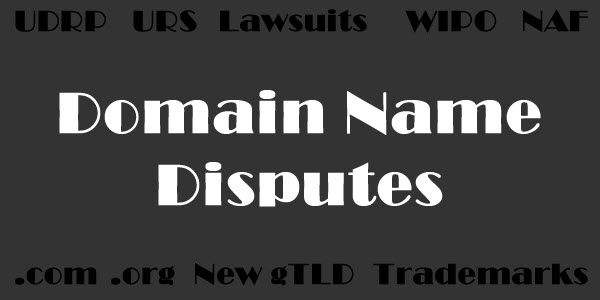The attempted theft of the domain name Queen.com from its lawful owner Rick Schwartz was spectacularly rejected by the World Intellectual Property Organization (WIPO) .
Frands Jepsen, owner and managing director of Queen.dk, tried to steal the domain name Queen.com as a plan B after he didn’t like the price tag of the domain name ($2m) that he tried to purchase. The company tried to steal the domain name using the Uniform Domain Name Dispute Resolution Policy (UDRP). The Internet Corporation for Assigned Names and Numbers (ICANN) designed the policy but not for cases like this.
The domain name complaint was decided by a 3-member panel of 3 independent judges at WIPO. The decision said that the complaint was denied and the owner would keep his domain name. The panel also found that the Complainant in this case Frands Jepsen of Knud Jepsen (Queen.dk) tried to abuse the domain name arbitration procedure and they convicted the company of attempted Reverse Domain Name Hijacking (RDNH).
The attempted domain name theft of the domain name Queen.com failed partly because the lawful owner bought the domain name in 1997 and never infringed on any of the rights of the flower company operating the Queen.dk website.
The complainant was represented by Marie Lykke Kristiansen of Patrade A/S Denmark who should have known better. This was a case that was doomed to fail yet they chose to proceed with the case and drive their client onto a wall.
Rick Schwartz was represented in this UDRP complaint by Zak Muscovitch.
Rick Schwartz, the owner of the domain name Queen.com, made a blog post on his blog called “Queen.com Hijacking by Frands Jepsen of Knud Jepsen, Denmark, Foiled by WIPO“. Rick had to pay $5,000 to defend what was rightfully his. Rick can now bring a federal action with a minimum $100,000 award PLUS attorney fees against Frands Jepsen of Knud Jepsen (Queen.dk). A US judge may award $100,000 plus attorney’s fees for the reverse domain name hijacking claim in federal court under the Anti-Cybersquatting Piracy Act (ACPA) Lanham Act S. 43(d), 15 U.S.C. S.1125(d).
Read here 2 large excerpts of the WIPO decision:
“The Complainant has failed to explain why the Respondent knew or should have known of the existence of the Complainant’s trademark rights at the time of registration of the Disputed Domain Name in 1997. No arguments have been put forward as to why the Respondent should at that time have been aware of the Complainant’s (Danish) trademark rights. Furthermore, it was only in 1999 that the Complainant made its first US application, and the Complainant only obtained a US trademark registration in 2015. The Complainant has provided no evidence of fame in 1997 and the Respondent has moreover aptly demonstrated that indeed even a present day (Danish) Google search does not readily disclose the existence of the Complainant and its marks.
In any case, the Disputed Domain Name consists of a common term and the Respondent has used the Disputed Domain Name in a way which corresponds to one of the common meanings of that term. The Complainant has failed to give the Panel any reason to think that the Respondent registered the Disputed Domain Name to capitalize on the alleged fame of the Complainant’s trademarks in any way, rather than in connection with one common meaning of the Disputed Domain Name.
The fact that the Disputed Domain Name redirects to adult material does not alter this finding. Where a domain name registrant tries to obtain financial gain by registering and using a non-generic domain name in which it has no rights or legitimate interests, the offering of adult content may be evidence of bad faith use, as decided in Six Continents Hotels, Inc. v. Seweryn Nowak, WIPO Case No. D2003-0022, Eli Lilly and Company v. Domain Magic, LLC, WIPO Case No. D2007-0144. However, as the Disputed Domain Name has a dictionary meaning, those cases do not apply.
Lastly, the Panel finds no grounds for the allegation that the Respondent engages in a pattern of cybersquatting. In light of the Respondent’s area of business, the fact that the Respondent was ordered to transfer a domain name to complainants in two previous UDRP decisions is insufficient proof to find a pattern of cybersquatting, particularly in the context of a domain name portfolio which runs into the thousands.”
“The Panel considers that the Complainant has been guilty of RDNH for the following reasons:
1. The Complainant has failed by a large margin. In the Panel’s opinion, the Complainant knew or at least should have known that it could not prove one of the essential UDRP elements. The disputed domain name comprises a single dictionary word. The Complainant has provided no evidence whatsoever which indicates that the Respondent was likely to have registered the Disputed Domain Name to target the Complainant’s Danish flower business rather than in connection with one of the Disputed Domain Name’s common meanings. For example, there is no evidence of trade mark fame and no evidence that the disputed domain name has ever been used in relation to flowers.
 OnlineDomain.com Domain Name News & Opinions
OnlineDomain.com Domain Name News & Opinions



 OnlineDomain.com - © Copyright 2012-2025 - All Rights Reserved
OnlineDomain.com - © Copyright 2012-2025 - All Rights Reserved